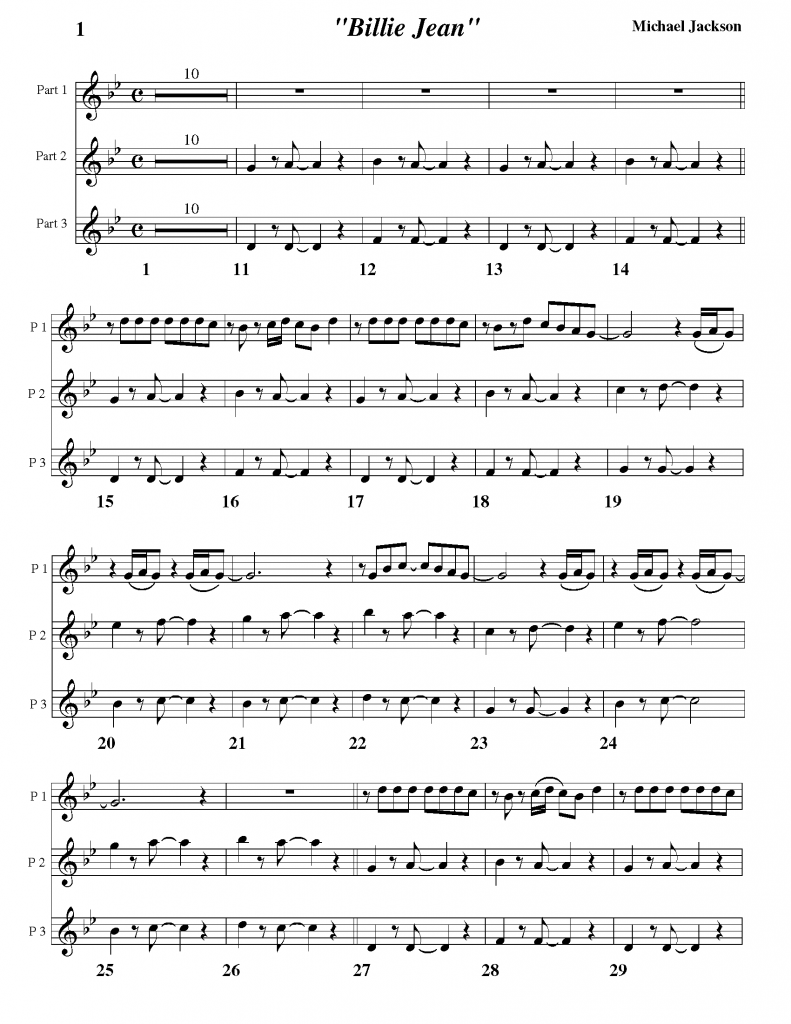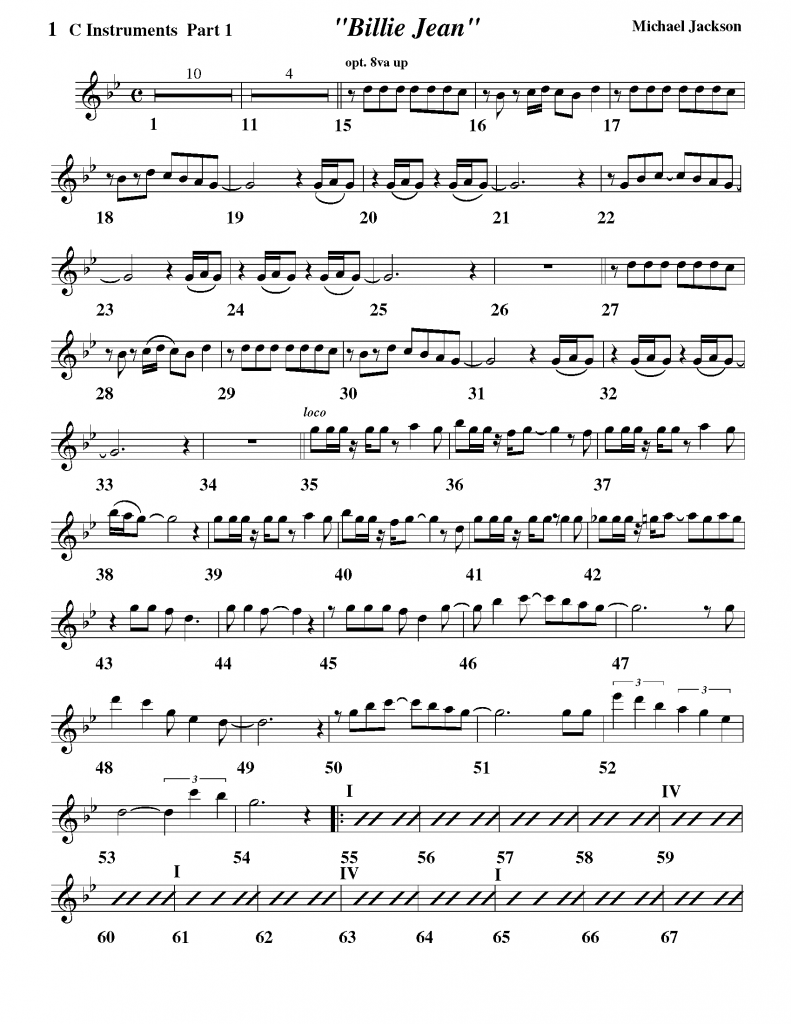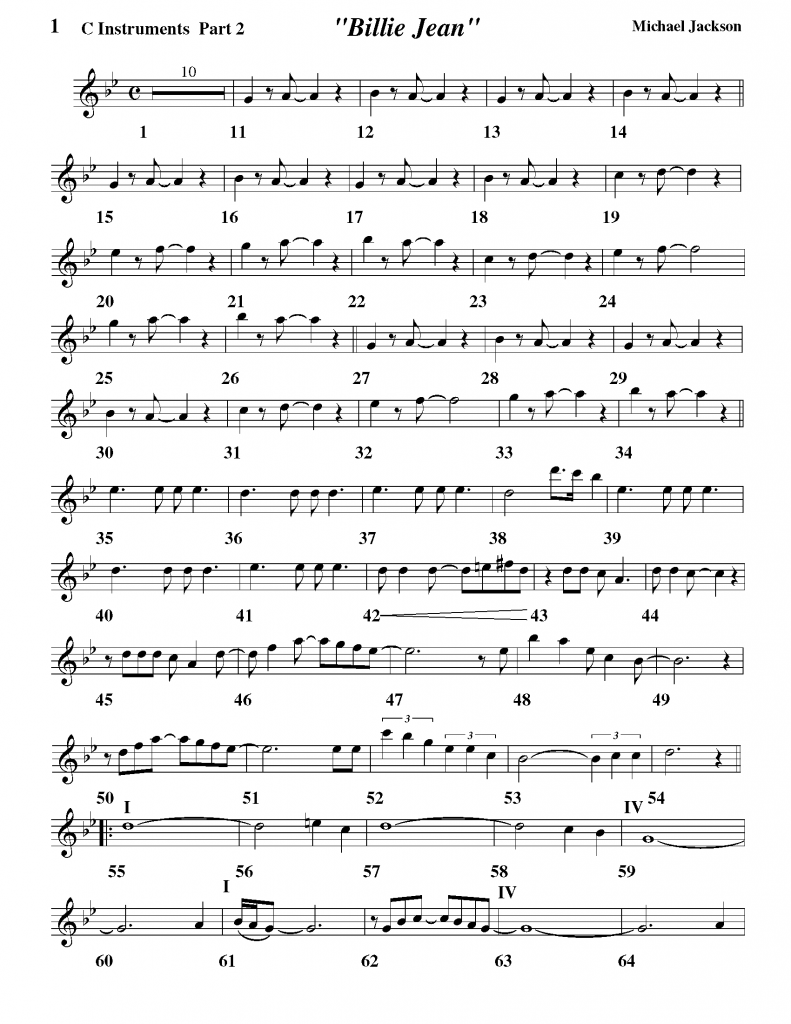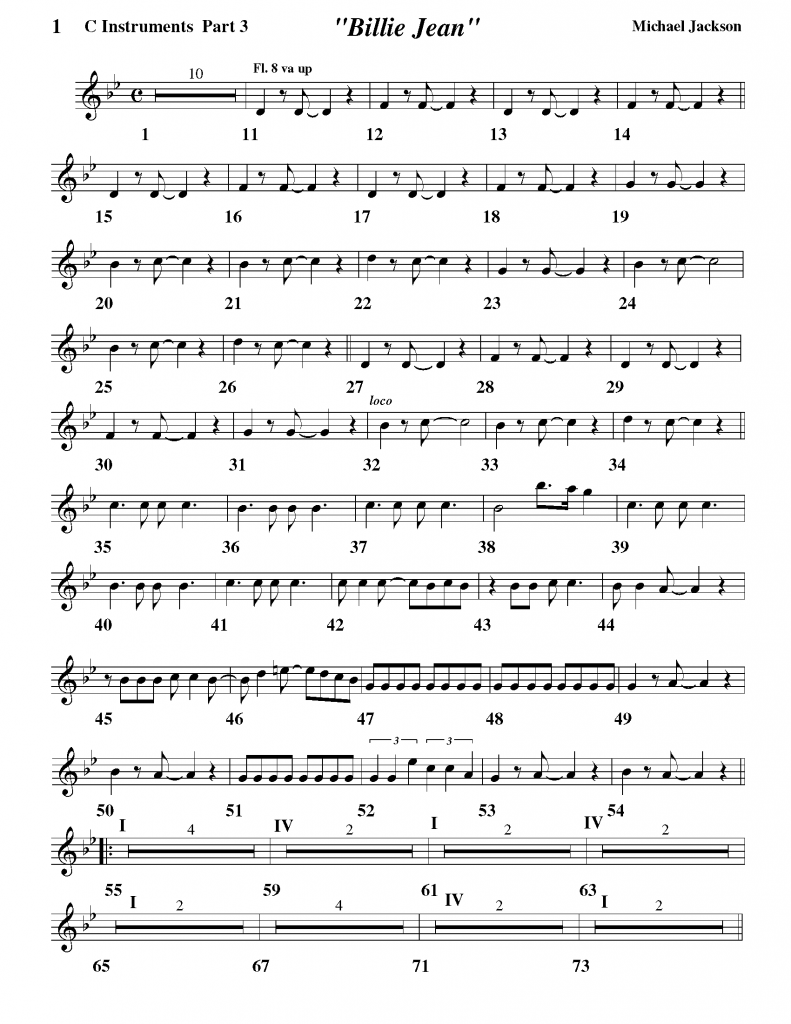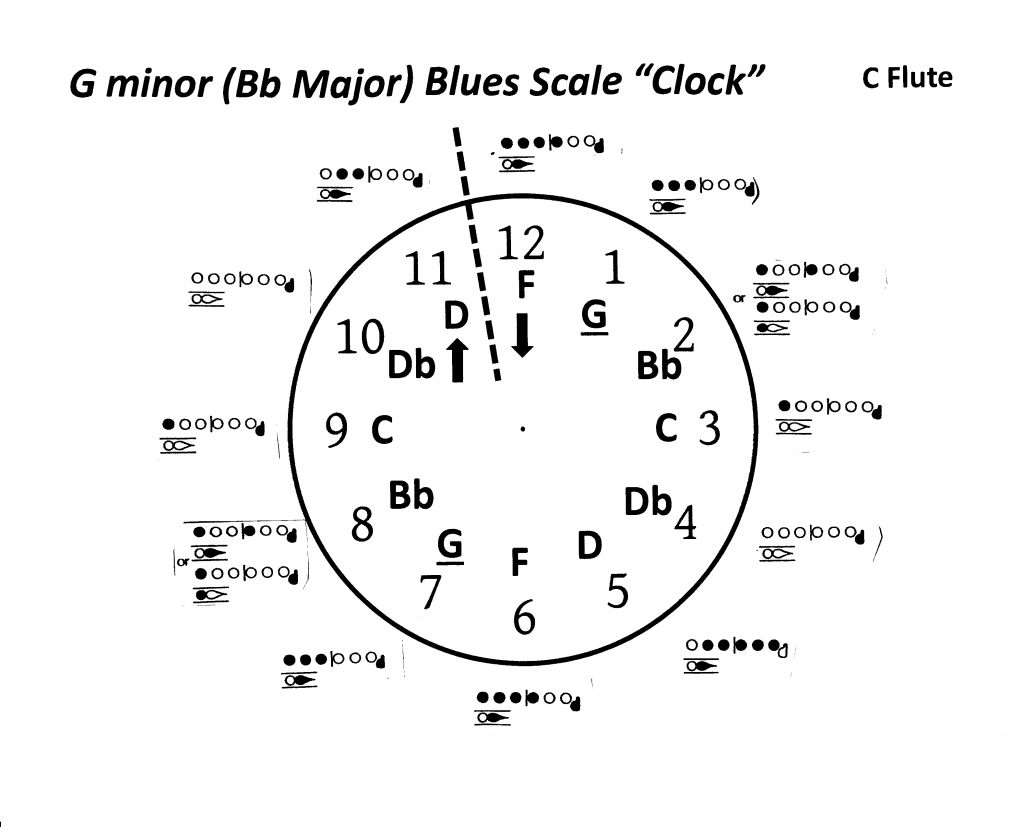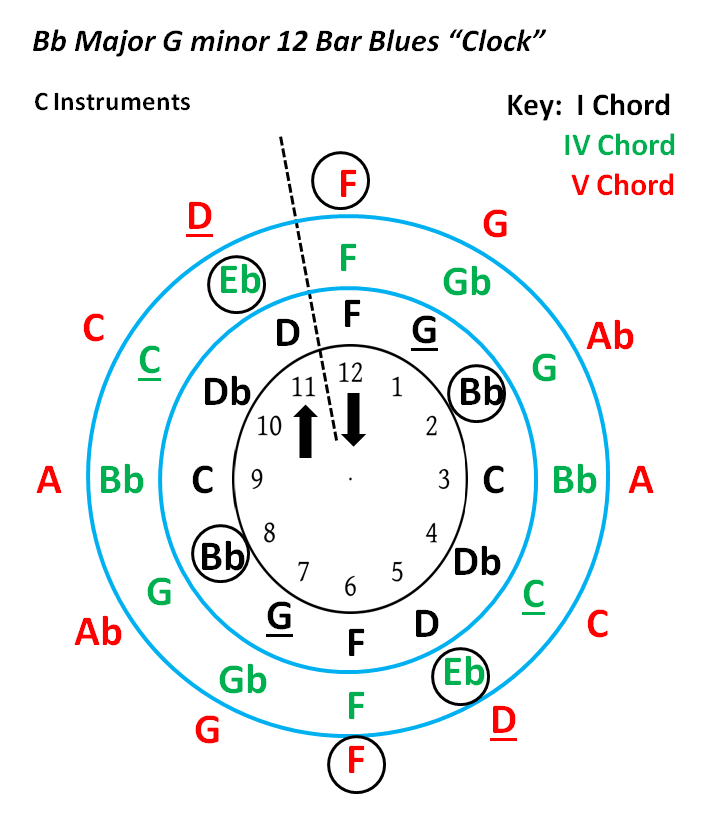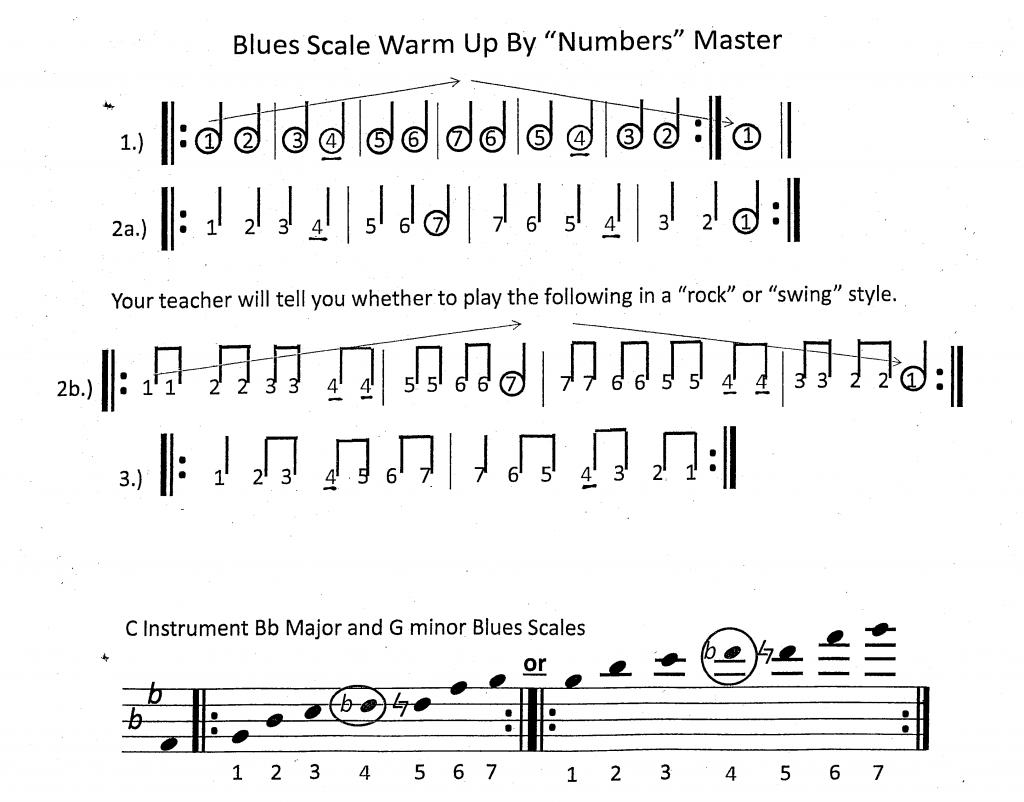Project Title: “Billie Jean” G minor blues scale Trio / Jazz Combo
Instructions: “Billie Jean”, one of the great classics written by Michael Jackson, is another project taken from an arrangement initially written for “Keyboard / Tech. Ensemble”. The introduction is 10 bars long, starting with the drum set for the first two bars, the electric bass then comes in for four bars, and finally a “cabasa” is added (not on this recording, but in the original) for the final four bars. Starting in measure 11 “parts 2 & 3” set up the harmonic rhythm, and in bar #15, the main melody is finally added. The solo improvisation section begins in bar #55 and is “cued” (by “slash” notation) in the first and third parts. When improvising this solo, you can easily get by with only the “G” minor blues scale (the “single” clock). This is arrangement is written so the second and third parts are easier rhythmically, and does not require as high of a range on your instrument as the first part. So, if there is only one performer, he or she can choose the part that best fits his or her abilities. After the improvisation section (ending at bar #74) the song repeats starting on the second melody, or “interlude”, which means transitional music.
There are other improvisation “variations” that can be used. It allows two to solo the full length of the improvisation section. In this scenario, the second or third part will solo first. The solo section still begins at bar #55, however (in this case) both soloists will continue improvising from bar #’s 75 to 83. The chords are written on the parts and score. In “Peter Gunn” we used only the “I” chord in the key of G minor. “Billie Jean” uses the “I” and IV” chords almost exclusively, so we need to move on to the black and green “rings” of the Bb Major/G minor color coded “blues clock”. Initially the transitions between the two chords are two to four bars in length. Starting at bar #75, the changes from the “IV” to “I” chords occur every measure. The only exception is in bar #82, where you need to switch to the “V” chord for four counts only. The solo ends at bar 83 and both parts return “as written”. Both parts continue playing until the end of bar #94, where the optional repeat can be added. This allows the arrangement to return to the start of the improvisation solo at 55, but this time the first part player is the soloist. On this second time through only, the second part will play his or her part as written. It is the teacher’s choice whether the “non-soloists” part should play their part from bar #’s 75 to 82. After the two soloists have performed (after the second time through) continue on to bar # 95 and play from there to the end of the arrangement.
This project offers a lot of different “play along” options. First, the “BillieJeanGminPB” audio file is the general “playback” of the original keyboard ensemble arrangement, transposed into the key of “G” minor. There is a short and long version depending on if you wish to do the improvisation section only once or twice. Also, all three parts are isolated in order to be practiced separately. You can choose to play along with the electric bass and drum set, or the drum set only. I transposed the MP3 in “Audacity”, so the pitch transfer is pretty close, but the process of guessing the exact settings is “hit or miss” at best. Also, the ending of this arrangement was modified, where the first part has been slightly modified. The full arrangement, with all of the ending parts can only be heard on the initial Finale “playback’s” version.
Three Part Score:
All 1st Instrument Parts:
All 2nd Instrument Parts:
All 3rd Instrument Parts:
Electric Bass Part:
Drum Set Part:
